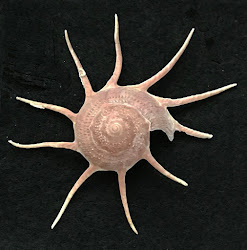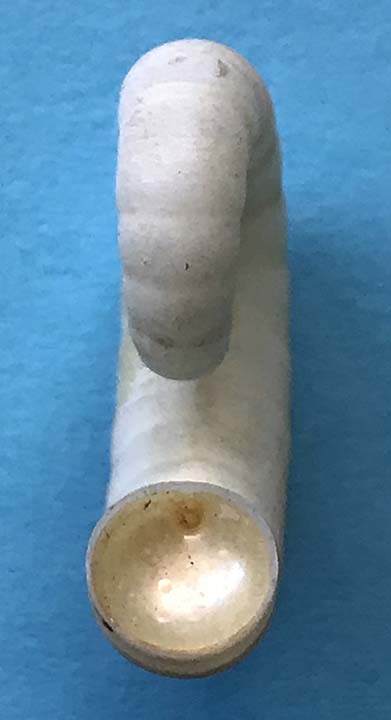THIS PART 2 IS A CONTINUATION OF THE IMMEDIATELY PRECEEDING POST DEALING WITH NACRE IN BIVALVES
GASTROPODS
(Both the lateral and apertural views of each specimen are illustrated below--or in the case of Haliotis, the dorsal and ventral views). The caption for each set of images precedes those images.
a) Mikadotrochus hirasei [83 mm wide, 115 mm high]. This “slit shell” is rare and found in deep waters (>100 m) of the coasts of Japan, Taiwan, and China. It belongs to family Pleurotomariidae. For more details, see my previous post for July 28, 2020.
a)b) Trochus niloticus [40 mm wide, 40 mm high]. This species is common and found in Hawaii. It belongs to family Trochidae.
c) Guildfordia triumphans [including the spines: 48 mm wide, 35 mm high]. This species (a.k.a., “the star shell” or also the “triumphant star turben” is common and found (caught in nets) in deep waters of East Africa. It belongs to family Turbinidae.
c)
d) Astraea undosa [80 mm wide, 60 mm high]. This species is common and found in southern California and Baja California. It belongs to family Turbinidae.
d)
e) Haliotis refuscens [187 mm wide, 130 mm high]. This species (a.k.a., “red abalone”) is moderately common and found on rocks mainly along the coast of central California. It belongs to family Haliotidae. For more information about this shell, see my previous post July 28, 2020.
e)
CEPHALOPODS
NAUTILOID
(both the exterior and interior views of the specimen are illustrated below)
f) Nautilus pompilius [16 cm wide], an Indo-Pacific modern-day specimen showing its interior layer of “mother-of-pearl” biomineral aragonite luster. See my previous post August 1, 2016 for more details.
AMMONITE
g) Placenticeras sp. [110 mm wide, 125 mm high], interior layer, with weathered remnants (the white patches overlying the sutures) showing faint pearly luster. This South Dakoka specimen is of Late Cretaceous age. See my previous post April 27, 2022 for more details.
g)
SEPIID
(both the side and frontal views of the specimen are illustrated below)
h) Spirula spirula [23 mm wide, 6 mm diameter]. This species is the only living member of this genus. The specimen is from Florida. The frontal view of the shell shows the perforation for the siphuncle, which connects all the chambers inside the shell. For more information, see my previous post August 8, 2019.















No comments:
Post a Comment